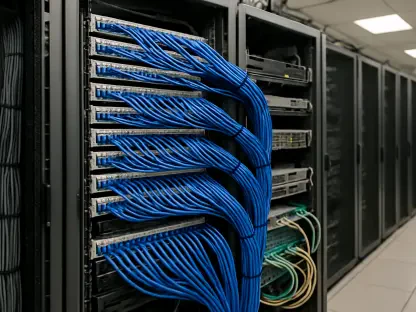Listen to the Article
The technology boom of the past decade has redefined how businesses operate, scale, and compete. Remote teams collaborate across time zones, global transactions are settled in milliseconds, and customer experiences are shaped by algorithms. But even in this hyperconnected age, one truth remains constant: you can’t manage what you can’t see.
Network blind spots—those invisible gaps in your infrastructure’s performance, security, and observability—are quietly draining enterprise value.
They’re the hidden latency issues that degrade user experience, the unmonitored assets that become security liabilities, and the exposed vulnerabilities in your monitoring tools that stall AI-driven insights. And in an era where speed, trust, and intelligence define market leadership, those gaps are no longer tolerable.
So why do they persist, and what will they cost if left unchecked? Find out in this article.
What Are Network Blind Spots, Really?
At their core, network blind spots are areas within your infrastructure where visibility is limited or nonexistent. These can include:
Legacy hardware not instrumented for telemetry
Encrypted traffic not fully inspected
Shadow IT (unsanctioned apps or devices)
IoT and edge nodes lacking security agents
Siloed cloud instances or partner connections
These are operational liabilities. Without complete visibility, you’re flying blind in high-stakes airspace. In the past, partial visibility was often tolerated. Today, it is a direct threat to your bottom line.
Why Are They Growing
It isn’t due to negligence that network blind spots are expanding; it is because of complexity. For one:
AI workloads need real-time awareness
AI models require real-time data ingestion, low-latency paths, and massive parallel processing, so blind spots can create silent choke points that corrupt data quality or slow model performance.
Multicloud and edge are harder to see
In traditional environments, everything lived behind a firewall. Now, with workloads split across AWS, Azure, Google Cloud, and hundreds of edge locations, the “network” is everywhere—and nowhere centralized. The tools don’t speak the same language. And the ops teams don’t always own the full stack.
Remote work has redrawn the attack surface
Hybrid work has turned home Wi-Fi, personal devices, and untrusted networks into part of the corporate perimeter. Virtual private networks and zero-trust network access solutions help, but they’re not foolproof. Endpoint agents fail, patches get missed, and traffic gets rerouted through unmanaged paths.
All of this creates gaps that attackers love to exploit.
The Business Impact of Seeing Less Than You Think
Blind spots don’t just slow things down—they erode resilience, trust, and profitability. Let’s examine the fallout.
Downtime and latency equal revenue loss. Even milliseconds of delay can degrade application performance, especially for real-time services like video conferencing, virtual desktops, and e-commerce. When networks go dark entirely, the cost spikes fast.
Gartner estimates the average cost of IT downtime at $5,600 per minute. For digital-first businesses, that number can jump to $9,000–$11,000 per minute. This is based on a 2014 study, and Atlassian says the average cost has been rising since then.
Unseen threats become breaches. Without full-packet visibility or east-west traffic analysis, attackers can establish a foothold within your network and remain undetected for extended periods, potentially months. The infamous SolarWinds breach? It went unnoticed for potentially seven months, partially due to visibility gaps in supply chain systems.
Even more sobering: IBM’s 2024 Cost of a data breach report cites an average cost of $4.88 million, a 10% increase over 2023 and the highest total ever.
Lost efficiency, lost insights. AI ops platforms are only as effective as the data they ingest. Feed them telemetry from partial or siloed systems, and they produce blind-alley recommendations. Network teams end up firefighting instead of forecasting.
In other words, poor observability quietly sabotages your ability to automate, optimize, and scale.
Why Traditional Tools Can’t Keep Up
Legacy monitoring tools were built for yesterday’s networks: static, centralized, and hardware-defined. Today’s networks are ephemeral, software-defined, and globally distributed.
Here’s where traditional tooling falls short:
SNMP polling can’t handle dynamic cloud resources
Static logs don’t capture encrypted lateral movement
Network taps miss virtualized or containerized traffic
Siloed dashboards create a fragmented truth
It’s not that your team is unaware—your tools just weren’t built for today’s network shape.
Closing the Visibility Gap With Modern Observability
To truly eliminate blind spots, organizations need to embrace modern observability strategies that go beyond monitoring for context, correlation, and clarity.
Best-in-class network observability in 2025 looks like:
End-to-end telemetry: Full-path visibility from endpoint, cloud to edge, with latency, packet loss, jitter, and security data collected at every hop.
AI-driven correlation: Machine learning algorithms that stitch together telemetry from various sources (logs, flows, packet captures, user behavior) to detect anomalies before they trigger incidents.
Unified data models: A single source of truth that spans network, application, and infrastructure layers—enabling cross-functional teams to act with shared context.
Agentless coverage for IoT/shadow IT: New tools offer passive discovery and risk scoring even for assets that can’t run agents, such as sensors, legacy machines, and rogue endpoints.
Multicloud visibility mesh: Abstraction layers that normalize telemetry from AWS, Azure, Google Cloud, and private infrastructure into a cohesive dashboard.
What Your Peers Are Doing Differently
Companies ahead of the curve are turning visibility into a strategic advantage. For instance:
A Fortune 100 financial firm reduced incident mean time to repair by deploying AI-powered observability across its global SD-WAN.
A major healthcare provider used encrypted traffic analytics to detect ransomware lateral movement, even without decrypting data.
A global e-commerce brand improved app load times by identifying hidden peering issues in its content delivery paths.
What do these leaders have in common? They treat network visibility as a board-level priority, not an IT afterthought.
You Can’t Win if You Can’t See
Network blind spots aren’t just bugs in the system. They’re indicators of strategic misalignment between what your business needs and what your network delivers.
As AI grows more dependent on real-time infrastructure and attack surfaces expand beyond firewalls, your enterprise can no longer afford to operate in the dark. Investing in modern observability is now essential to compete.









